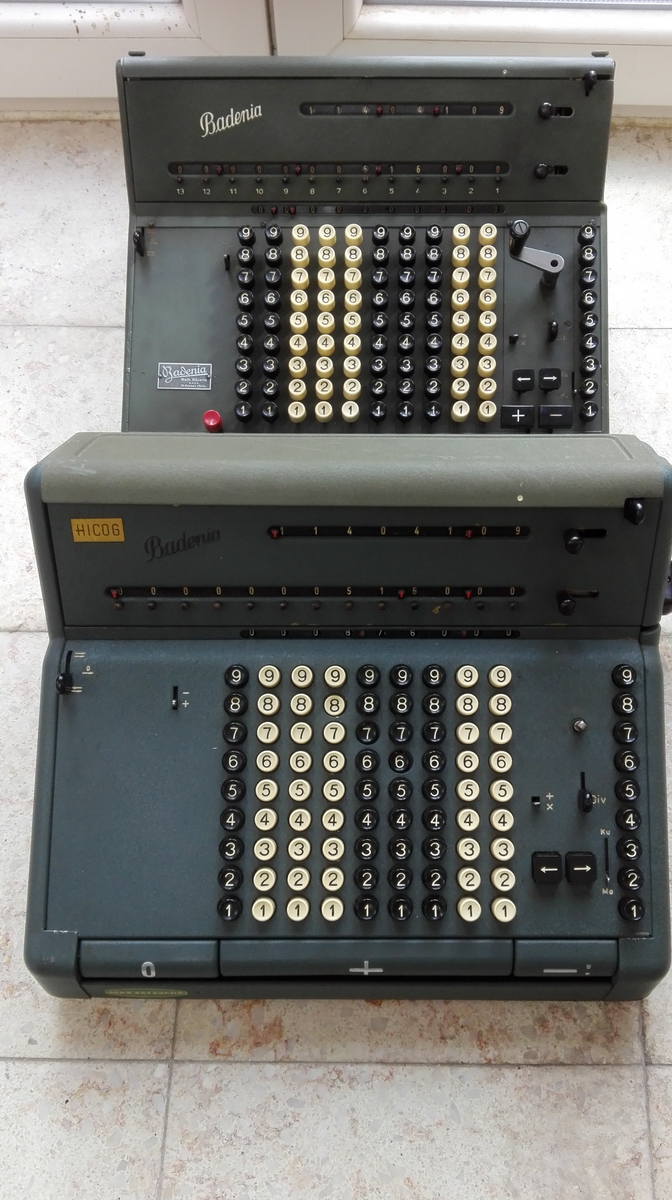Badenia TEG13, s/n 15114
Does anyone else notice that lately rather a lot of electric machines have been arriving in the collection? It's too early to speak of a trend, because my heart lies still with the very old machines, before the advent of electricity, but I can certainly appreciate a nicely automated machine as well these days.One of the smaller brands was Badenia, by the "EmBee" company (Mathias Bäuerle), which also sold "Peerless", a brand name which was retained for a while for the slider machines, and abroad.
This is one of the earlier, pre-1950 half-automatics, but a very late one (I know this because I also have n° 15914, which has the later design introduced in approximately 1950). The letters in the name are for "Tastenmaschine Elektrisch Gleitlineal" with 13 positions in the result. There used to be a contemporary model TE13, which had a lifting carriage instead of a sliding carriage. When all the machines that were sold had changed to slide carriages, the model designation became TE13 again for this machine too. Alternative models are TA (A for Automatic division) and TAV (V for "Voreinstellung Komma" - decimal point pre-selector, a system for automatically figuring out the position of the decimal point.)
This machine has a selector for the multiplier, and it has stop-division which is operated by the + and - keys only.
I bought the machine on ebay, from someone in Germany, who canceled the sale straightaway after the auction. There were some complicating circumstances, and he also thought that the machine was worth more than my winning bid. Some emailing up and down convinced him that that was not really the case, and I really liked the machine, because it also came with the original manual and cover, and it looked nice and clean.
It finally arrived, I tested it with the hand crank that was also still present (but needs to be taken off for motor operation, because it can whack you quite painfully!), and then decided I'd plug it in to see whether the automatic functions would work. They did, sort of. There was an issue where the cone wheels in the counter register didn't disengage from their driving gears, so that the register would be stuck and could not be cleared, and in addition, if the carriage would be shifted, the result would change. That is of course not the idea behind a calculator. Despite these defects, I verified that division and multiplication worked as advertised.
Then came the search for what was going wrong and why. The first thing is of course to undo the housing and lubricate everything. That didn't solve the issue. It seemed as though the sprung bar that either lifts or depresses the driving gears into contact with the cone wheels would not completely spring back. This could be verified during operation by putting the carriage not at its leftmost position, in that case the whole mechanism is visible.
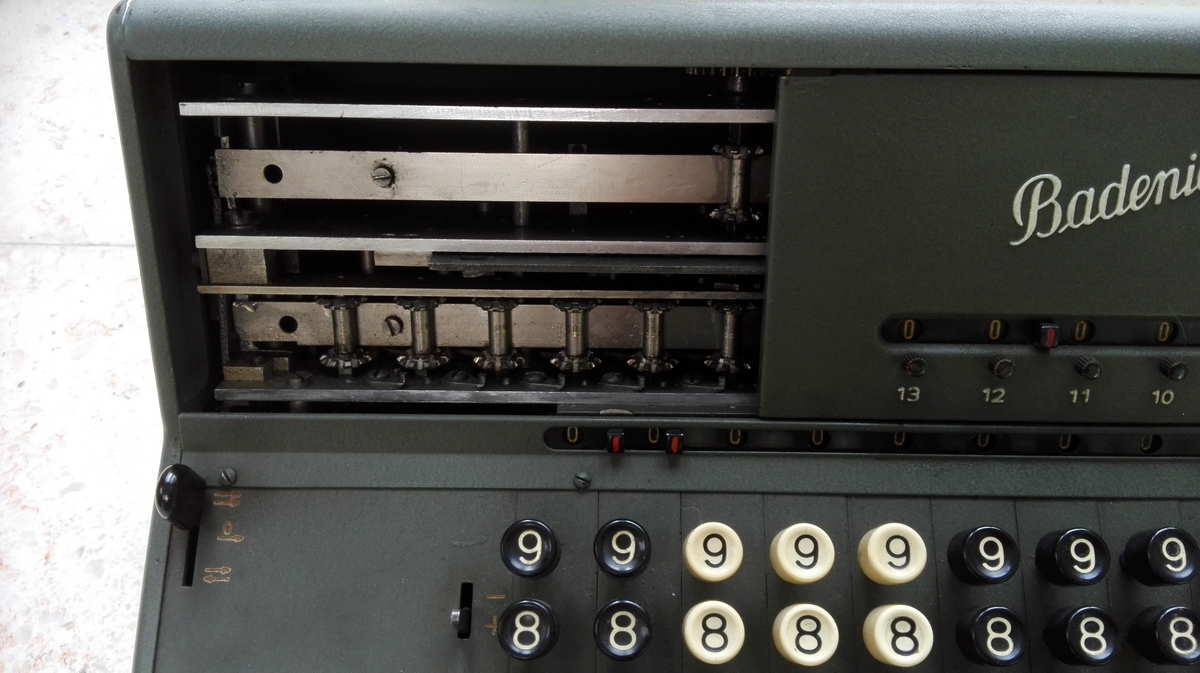
So after a lot more lubrication, it transpired that the problem would only arise with the carriage on the machine - the gears would spring back sharply and completely without the carriage present. So this seemed to indicate that something was interfering. I had a good look at the carriage, and sure enough, the bane of 1930s goods struck in the carriage of this machine - white metal castings (mazak/zamac) were what kept the bar in place that in turn keeps the numeral wheels and cone gears in place. Zamac rots, crack and swells, and one of the pieces did exactly that, slightly lifting the bar, causing it to interfere with the driving gears. A file made short work of that problem, and the machine works absolutely fine now. You can see four of these zamac blocks in this picture of the back of the carriage (two of them at the very ends of the banks of numeral wheels/cone gears).
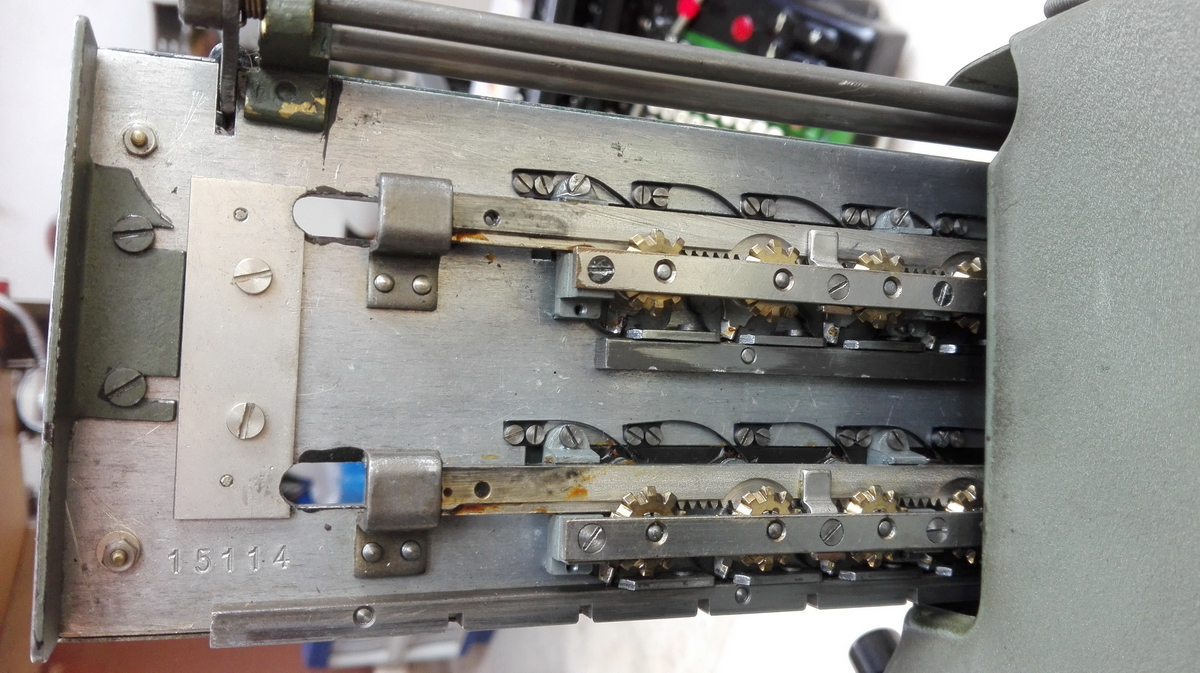
The manual is here. Briefly, the machine has multiplier selector buttons at the right, which immediately also shift the carriage to the right at the end of the operation. There is a stub for the hand crank, a lever for stop division, a selector for + vs. x, which clears the keyboard after every turn of the crank in addition mode, arrow buttons for carriage movement, addition and subtraction buttons, as well as a selector at the top left of the keyboad which will invert the operation effected. The selector at the top left is self-explanatory - in the top position both counter and result count positive, whereas in the bottom position, the result counts negatively (for division). There is a middle position, in which the counter does not operate, for use as a simple adding machine. There is also a mysterious little switch at the bottom right, that offer a choice between "Ku." and "Mo." - crank (Kurbel) and motor. I am not entirely sure what it does internally, because also when the switch is in "Ku." position, the motor will run the machine - the interesting bit is that it won't stop - so you press the plus button once, and the machine starts running, and running ... until you flip this switch to "Mo." ...then it stops. Documented in the manual too! Weird.
Here's a video of the operation of the machine, followed by its portrait.
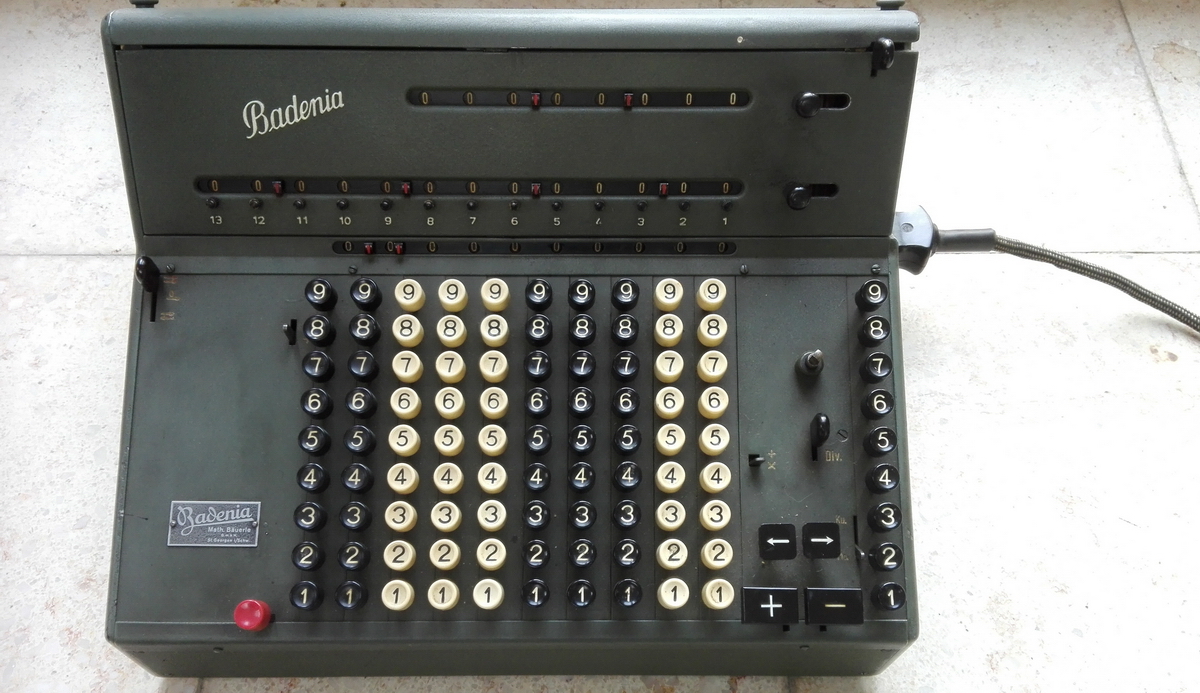
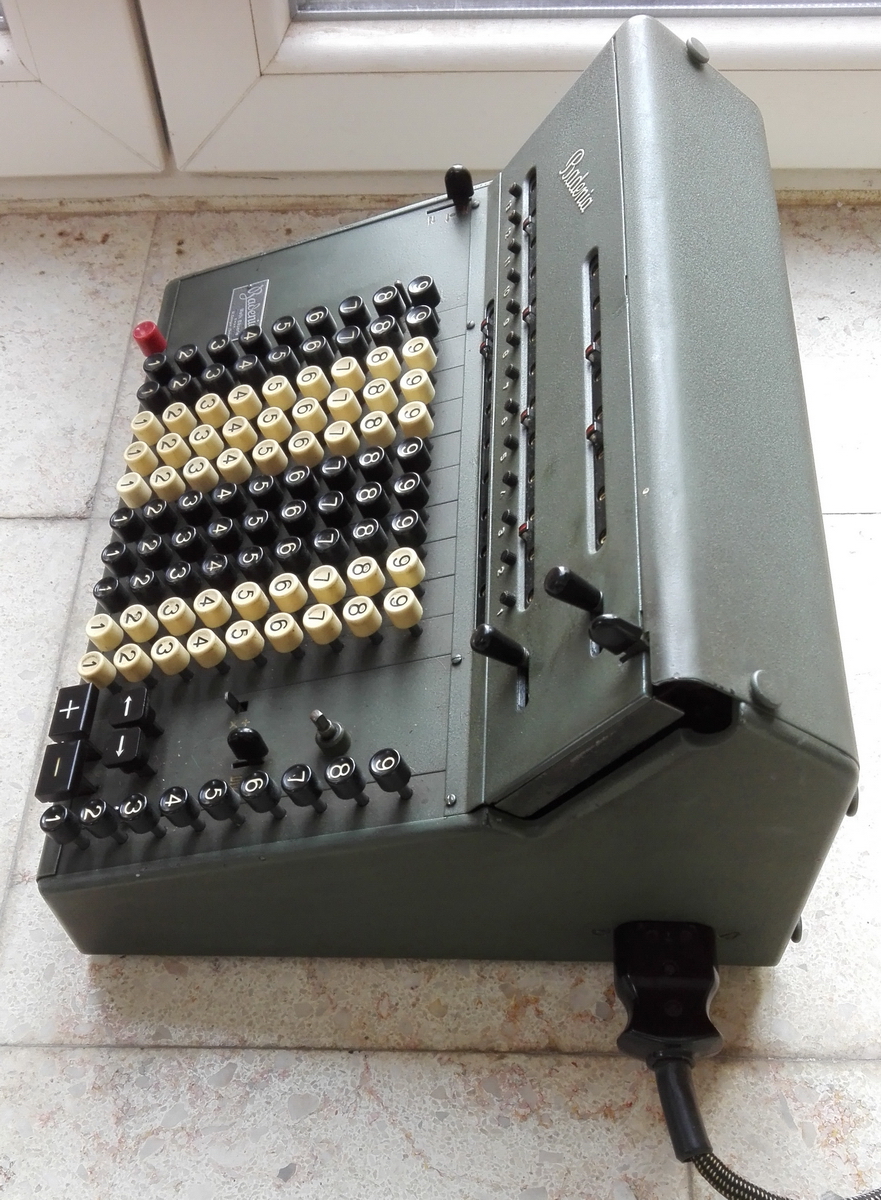
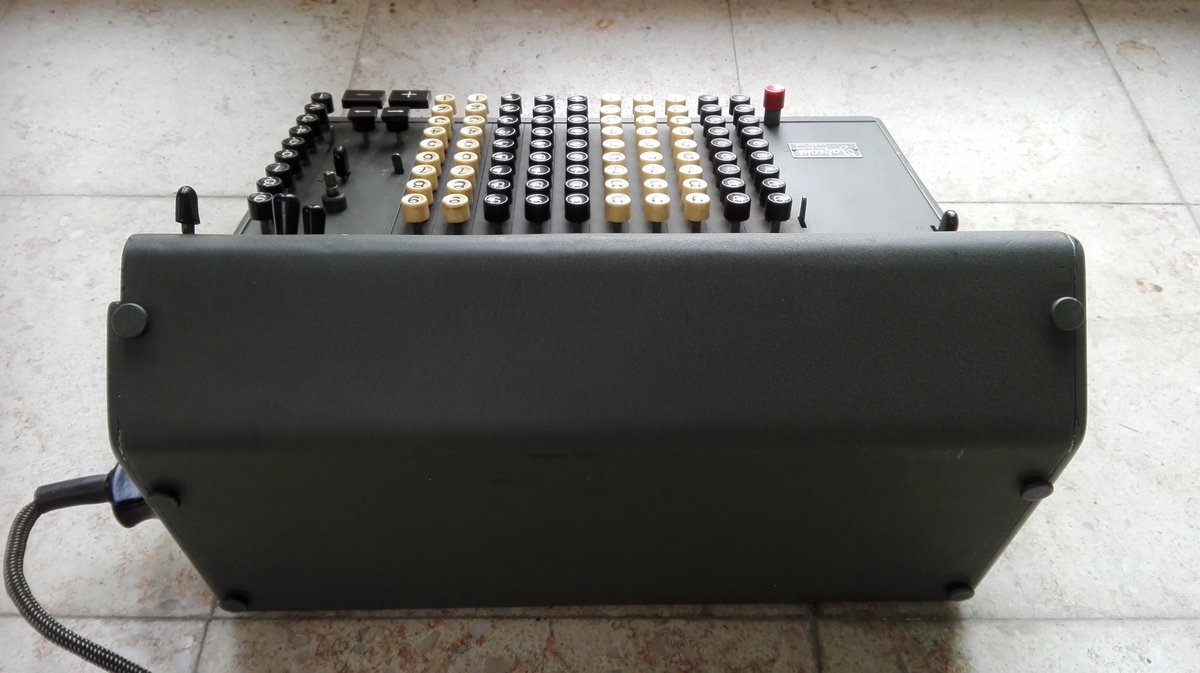
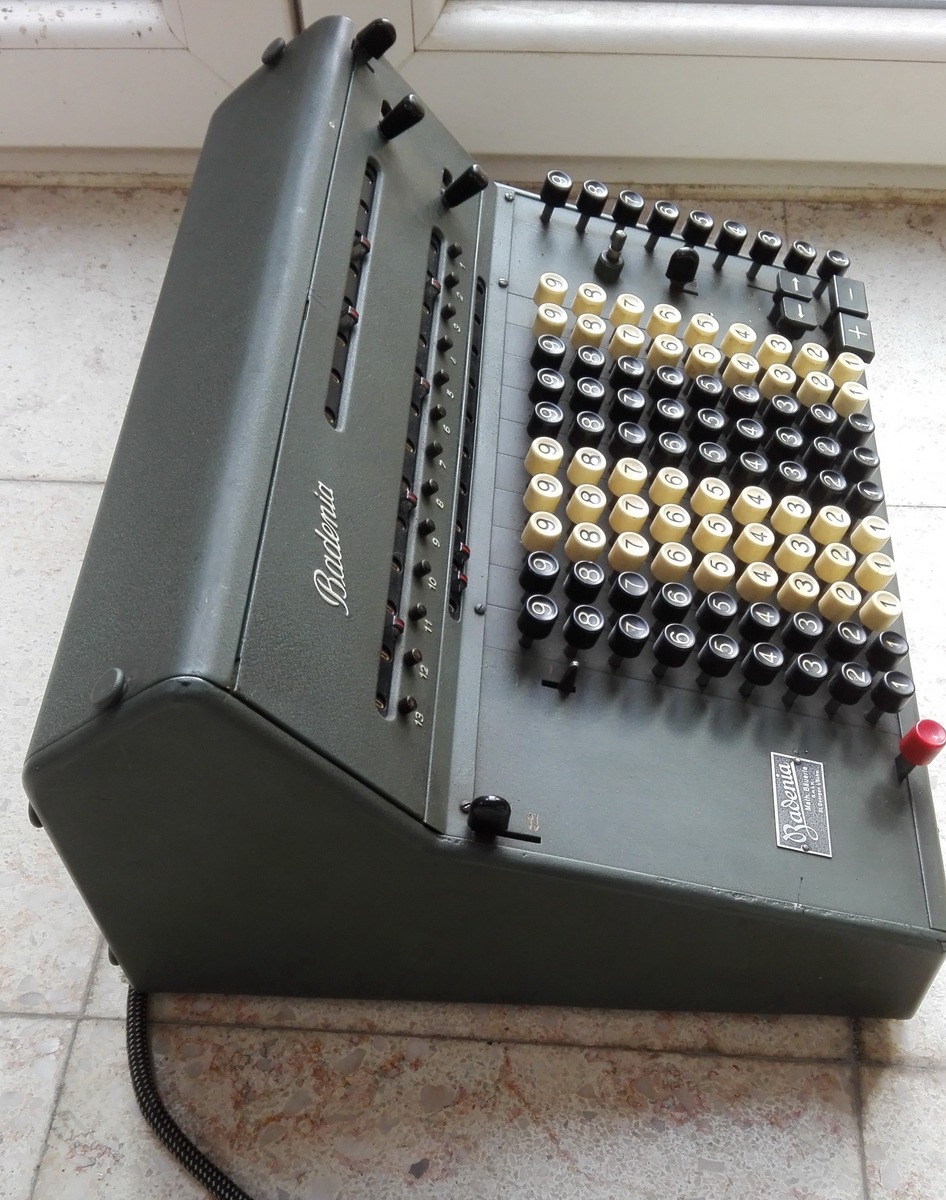
Badenia TE13, s/n 15914
This is a few months later, with the new shape of the outer cowling and relocated buttons for a sleek 1950's design. I bought this machine over the internet (as one does), and when it arrived, it was totally blocked, the reason being that the carriage would hit the cowling when trying to move it out. I was a bit mystified how this could come about, but things qucikly became clear. It turns out that in order for the cowling to fit properly against the keyboard and carriage, and all the other mechanical parts of the machine, it has a stupefyingly heavy metal base plate, onto which the cowling fits precisely. The machine itself is then adjusted by screwing in or out stops on three legs, that raise or lower brackets, to which the machine is then screwed.Well, here's one those brackets, and the source of the problem:
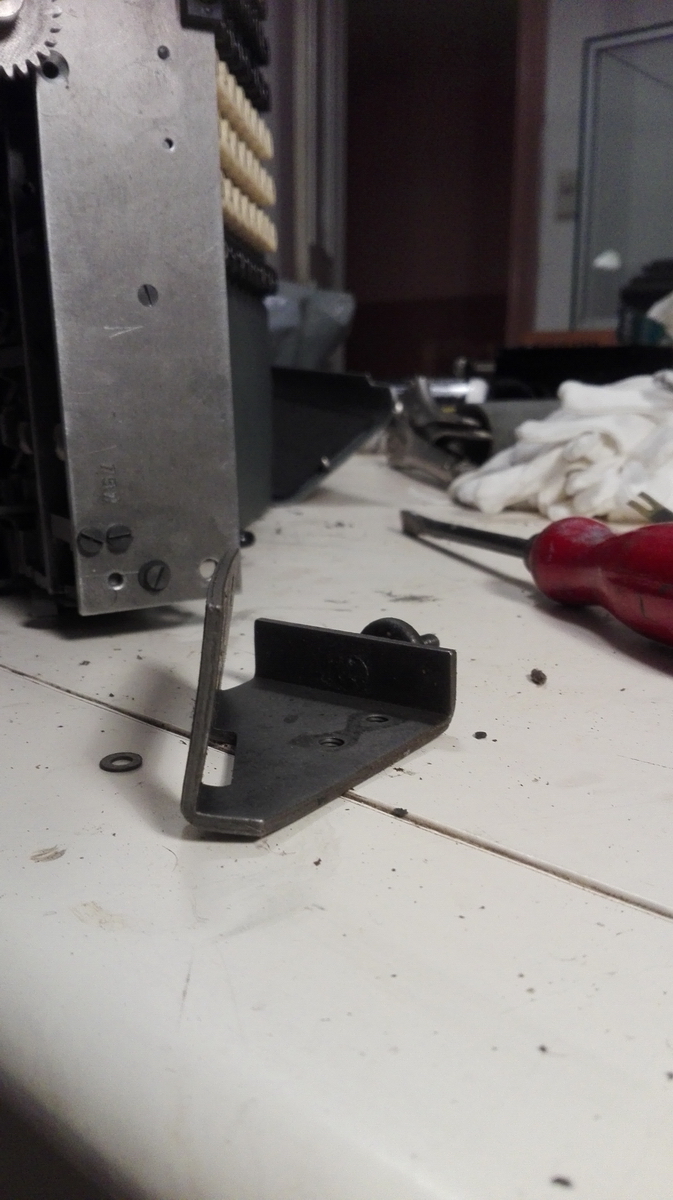
As you can probably see, it's all bent to hell. This is the disadvantage of designing a shell for a machine that is only connected to it through three screws via the baseplate - one good knock, and everything is out of whack.
Here's the rest of it:
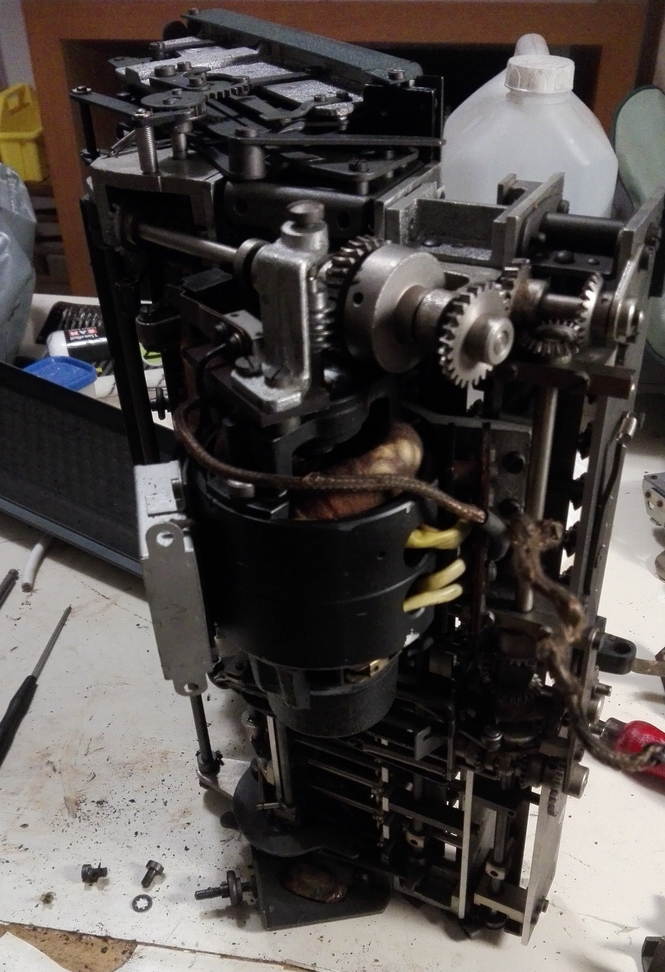
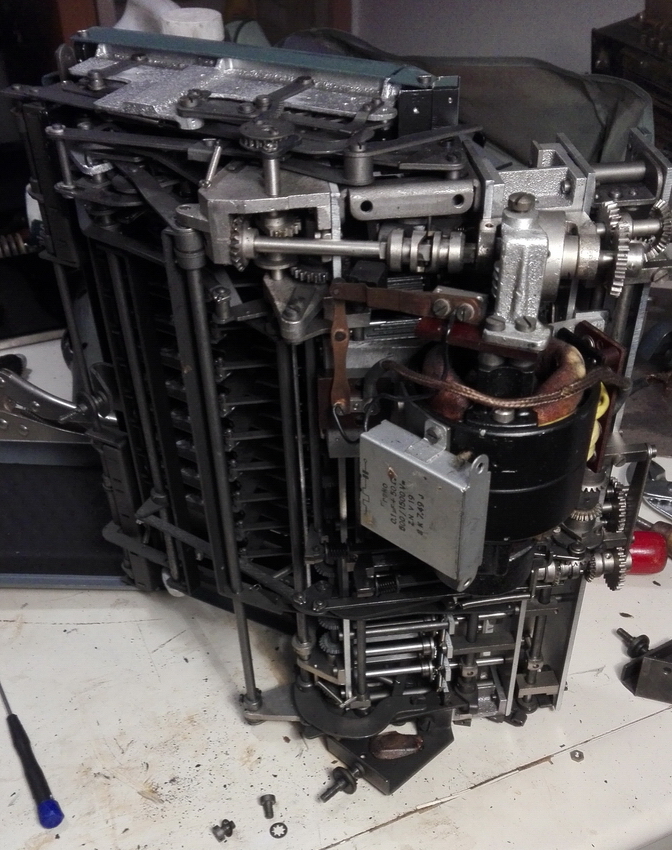
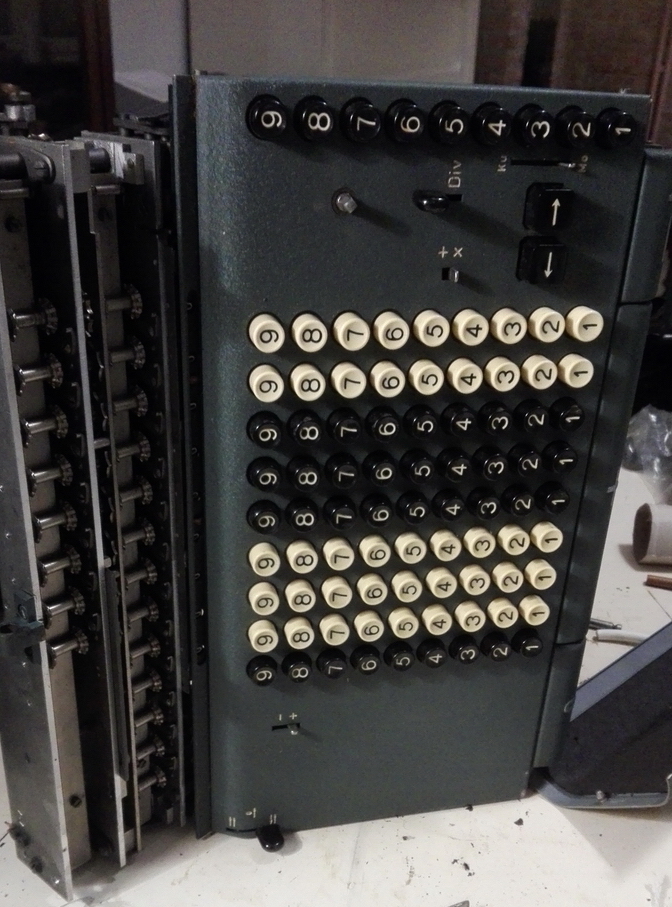
Once the bracket was bent back into shape, the shenanigans started to get everything mounted back up. In order to see whether the machine sits right, you need to mount it to the baseplate, tighten the bolts, put the top cover on, tighten all four screws, reinstall the carriage, and then find out that it's still not right - reverse everything in order to get at the bolts that adjust the position of the machine - now you have to guess how much to adjust ... reassemble everything ... too much! Etc etc... It's a pretty design, for sure, but I wouldn't call it practical.
There was one more mechanical mystery, which is a kind of feeling lever that touches the back of the carriage rail, which is indented for precise location of the carriage. However, when a carriage shift is a little slow, this lever will just fit into those indents, and because it is rather flimsy, it will bend as well as block further carriage movement. I had to make a kind of "hat" in thin aluminium plate to prevent this from happening. What it's supposed to do originally, I'm still not sure.
This machine, n° 15914, actually has a type plate in the back that says it's a TE13, so the "G" for slide carriage had been eliminated by then. It was sold in Stuttgart by Max Zetzsche ...
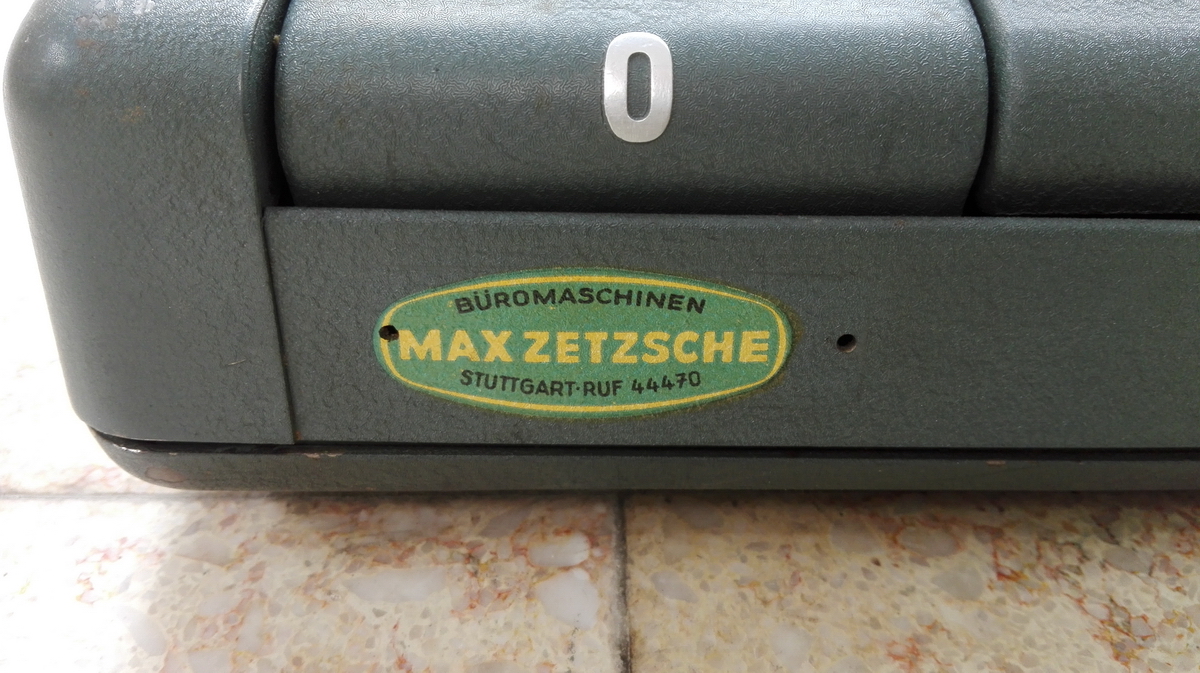
...and "HICOG" is the "High Commission for Occupied Germany" - so this was apparently bought and used by the allied forces occupying Germany until 1955 - based in Bonn (which is not exactly near Stuttgart, so that remains a bit of a mystery).

The top cover at the back simply can be taken off if you fancy electrocuting yourself. That is also probably how at some point it has become exchanged for one of a slightly different colour. There's probably a mirrored pale green machine out there with a more bluish back cover ...
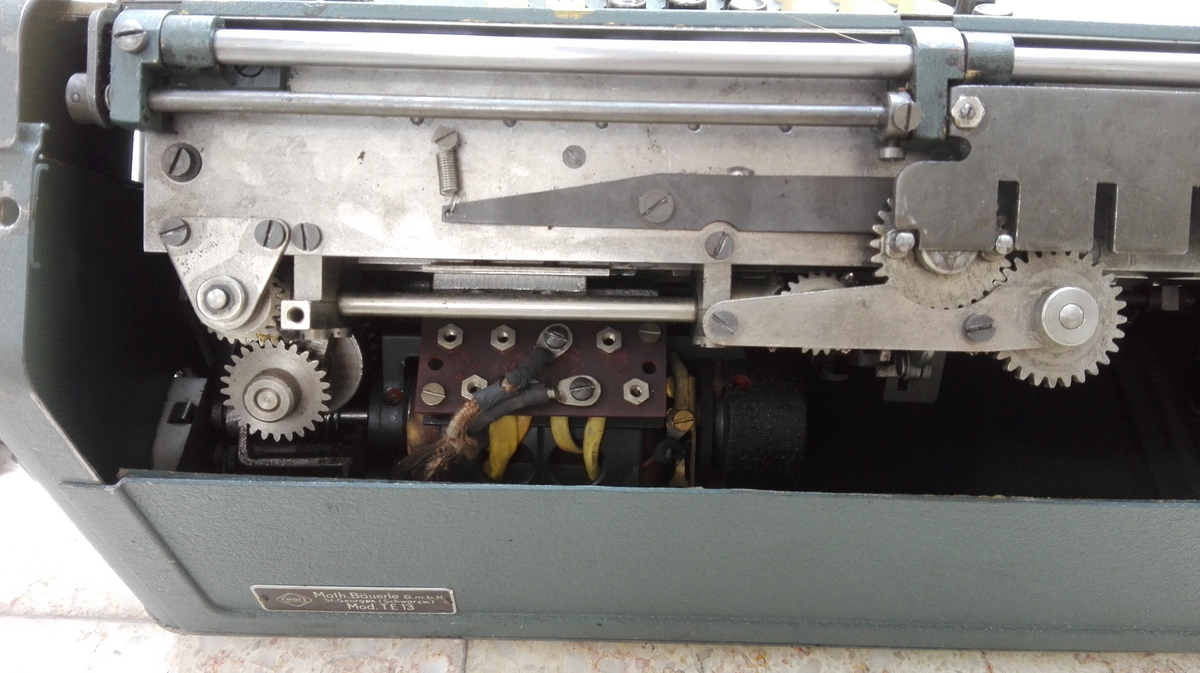
Here's some more pictures of this pretty design.
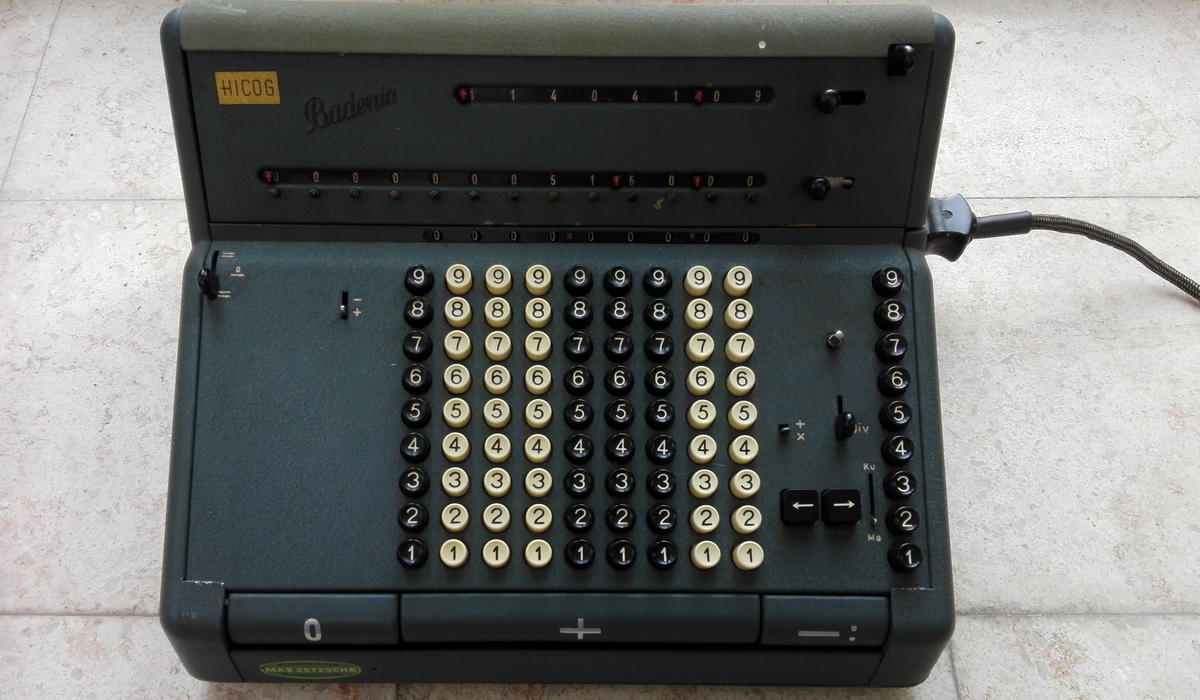
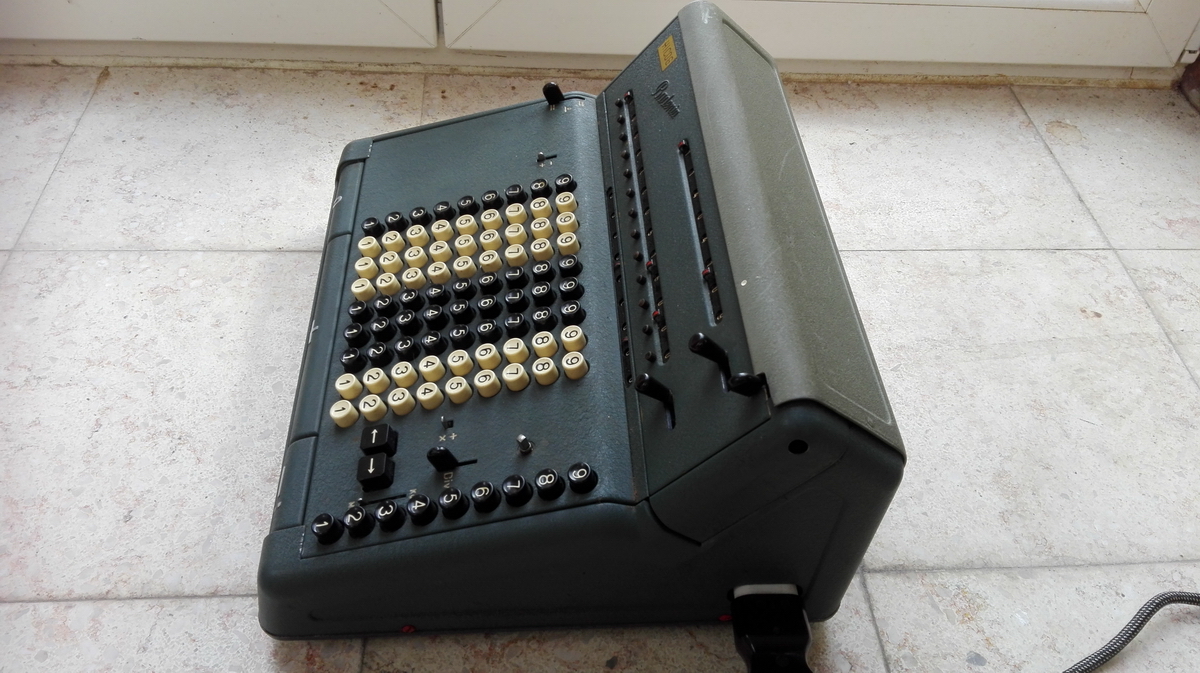
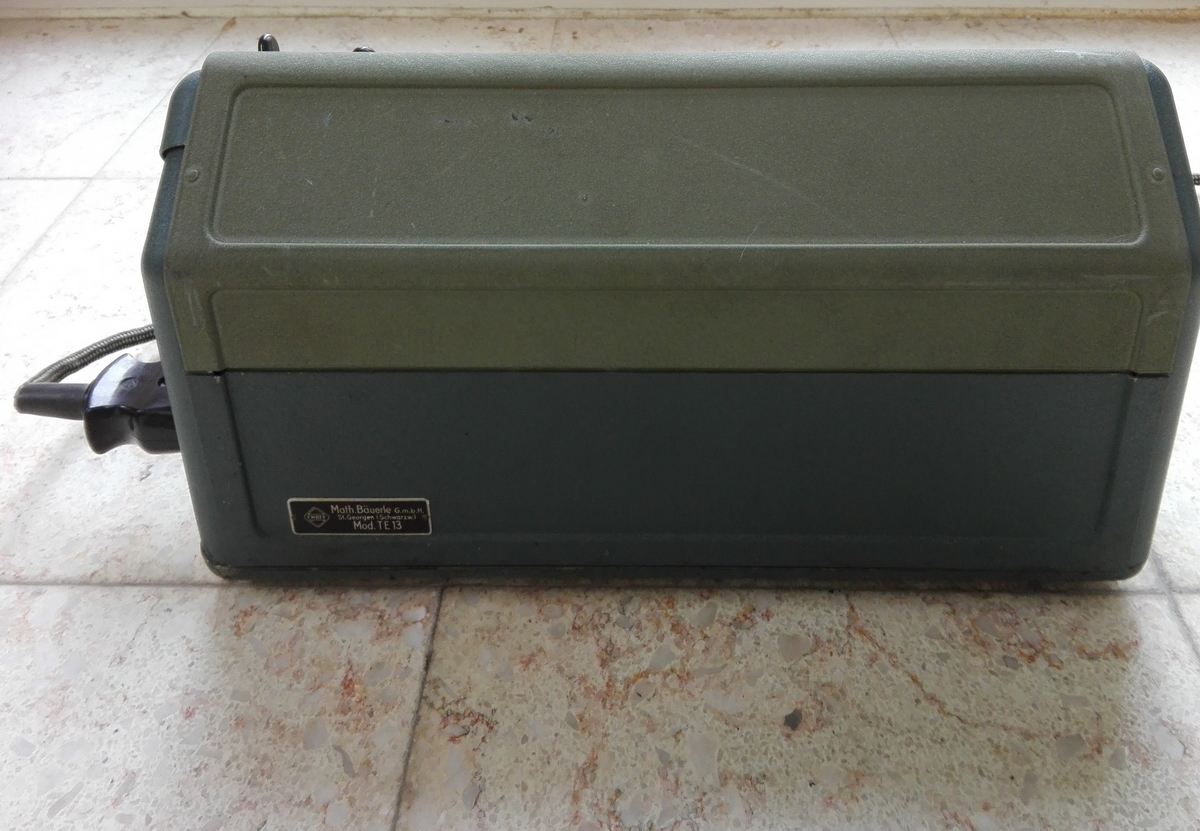

Then a video of the newer machine, too:
And finally, the older and younger sisters together:
